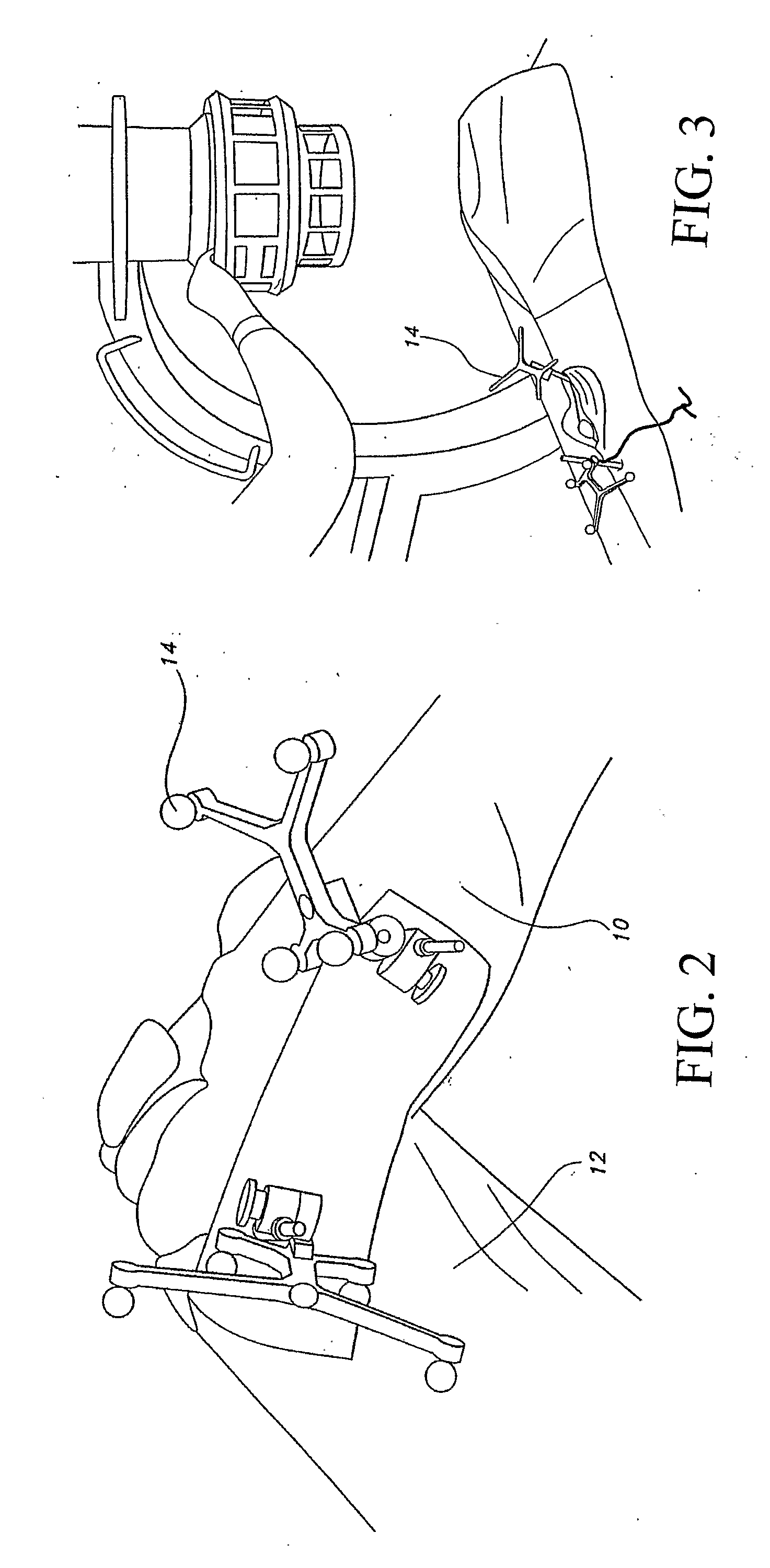System and Method For Determining Tibial Rotation
a technology of tibial rotation and system, applied in the field of computer assisted surgery, can solve the problems of rapid failure of implants, rapid failure of arthroplasties, and tibial rotation tend to get worse, and achieve the effect of improving accuracy over the art and being easy to repea
- Summary
- Abstract
- Description
- Claims
- Application Information
AI Technical Summary
Benefits of technology
Problems solved by technology
Method used
Image
Examples
Embodiment Construction
[0058]Various positional terms referring to the human anatomy—such as distal, proximal, medial, lateral, anterior and posterior—are used in this application in their customary and usual manner. The term “distal” refers to the area away from the point of attachment to the body, whereas the term “proximal” refers to the area near the point of attachment the body. The term “medial” refers to something situated closer to the middle of the body, while “lateral” refers to something situated closer to the left side or the right side of the body. Finally, “anterior” refers to something situated closer to the front of the body and “posterior” refers to something situated closer to the rear of the body.
[0059]Also, the term “mechanical axis” of the femur refers to an imaginary line drawn from the center of the femoral head to the center of the distal femur at the knee, and the term “anatomic axis” of the femur refers to an imaginary line drawn the middle of the femoral shaft. The angle between...
PUM
| Property | Measurement | Unit |
|---|---|---|
| angle | aaaaa | aaaaa |
| angle | aaaaa | aaaaa |
| angle | aaaaa | aaaaa |
Abstract
Description
Claims
Application Information
 Login to View More
Login to View More - R&D
- Intellectual Property
- Life Sciences
- Materials
- Tech Scout
- Unparalleled Data Quality
- Higher Quality Content
- 60% Fewer Hallucinations
Browse by: Latest US Patents, China's latest patents, Technical Efficacy Thesaurus, Application Domain, Technology Topic, Popular Technical Reports.
© 2025 PatSnap. All rights reserved.Legal|Privacy policy|Modern Slavery Act Transparency Statement|Sitemap|About US| Contact US: help@patsnap.com



